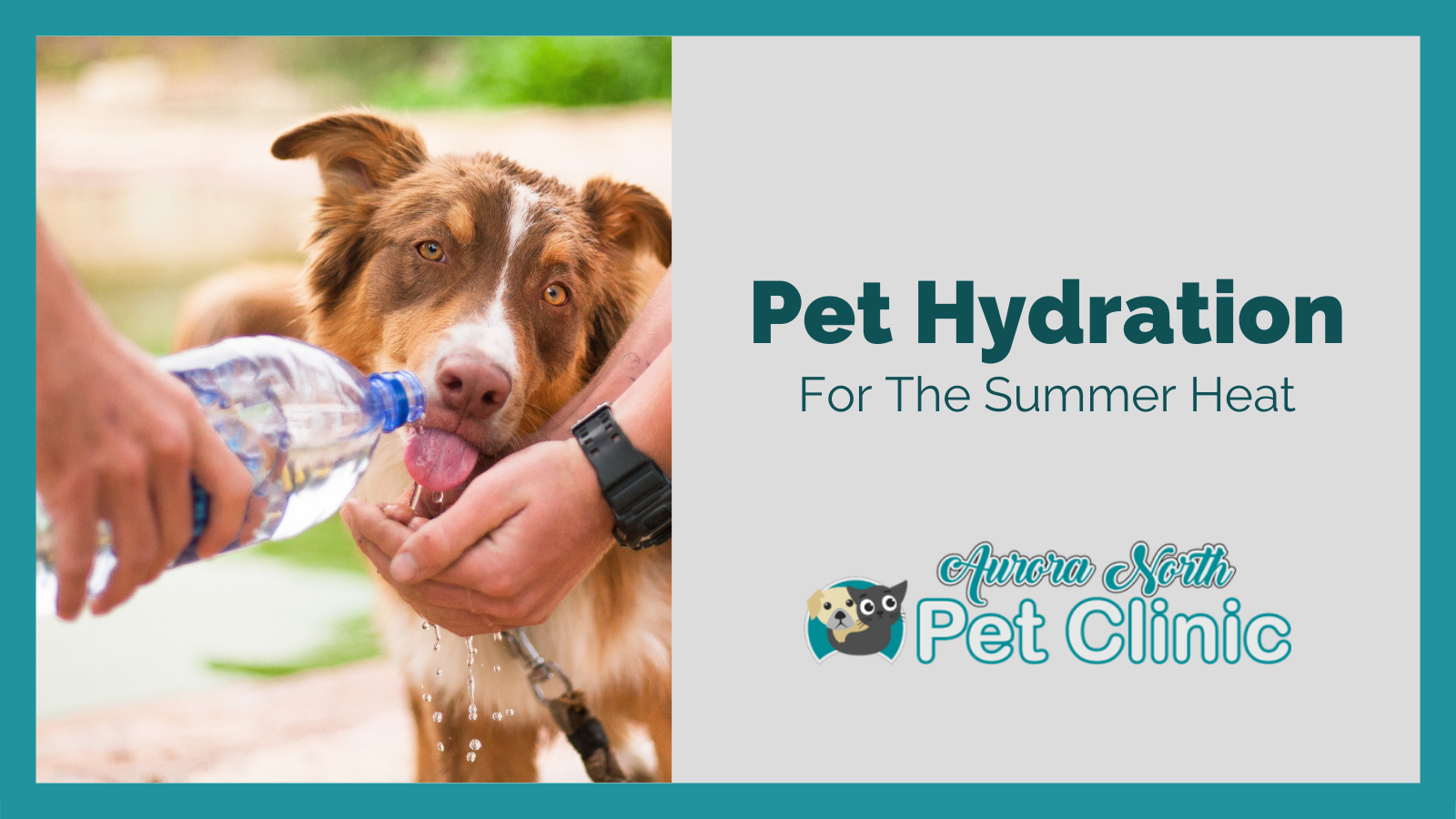
July is Pet Hydration Awareness Month. We must remind ourselves about the importance of keeping our pets hydrated, healthy, and safe. The summer months can take quite a toll on pet nutrition and diet. Therefore, it’s crucial to stress the importance of pet hydration.
Why is Pet Hydration Important?
Pet hydration is crucial for the following reasons:
Body temperature regulation – Water cools down pets’ body temperature, allowing them to maintain a constant and healthy body temperature regardless of external temperatures.
Urinary tract health – Adequate hydration ensures a reduced risk of urinary tract infection. It also prevents the formation of crystals and urinary stones, which can otherwise result in dangerous obstructions.
Better recovery and healing – A good water supply helps your pet’s kidneys stay healthy. It removes toxins from the bodies of our little furry fellows, enabling better recovery from injury, infections, surgical procedures, and more.
Increased energy levels – Water helps convert fat to energy. This helps our pets to have enough energy to engage in activity, play, and exercise.
Signs of Pet Dehydration
Dehydration may present itself in the form of one or more of the following symptoms:
- – Vomiting
- – Diarrhea
- – Loss of appetite
- – Loss of energy
- – Excessive panting
- – Dry and sunken eyes
- – Dry, sticky gums
- – Loss of skin elasticity
If you notice any of the above signs, call your veterinary clinic immediately so that they can guide you further on how to monitor your pet’s health. If necessary, the vet may administer fluids to hydrate your pet.
How to Keep Your Pet Hydrated This Summer
Here are some tips to keep your pet hydrated this summer season.
Know how much water your pet needs
As a general rule, pets require one ounce of water for each pound of body weight. That means a cat weighing 10 pounds would need 10 ounces of water daily. Similarly, a 70-pound dog would require 70 ounces of water every day to ensure proper hydration.
It can be pretty tough to monitor the amount of water that your fur babies are consuming if you have multiple pets. Regardless, knowing how much water your pet needs in their system daily helps you keep a closer eye on their water intake and more.
Give your pet access to fresh water at all times
Make sure to give your pets access to clean and fresh drinking water. Unlike food, water consumption should not be monitored as strictly as their food, as your pet’s water needs may vary from time to time. In any case, be sure to leave water for them in their bowl to drink at all times. Make sure to replace the water regularly to prevent bacterial accumulation.
Carry water with you
If you are on the go, perhaps out running errands in the neighbourhood or taking your pet outside for a walk, be sure to carry some water along, for you’re not sure when your pet may need to drink water. If you are taking a more extended trip, it is a good idea to make some pit stops to allow your pet to drink water.
Provide a place to cool off
Since pets are smaller than humans, their bodies are more prone to heating up when it’s warm. Pets with thick coats are especially more likely to get heated up in the sun quickly. When outside, you must ensure that your pet is near a place to cool off if the weather gets too hot and your pet gets too heated up. Find a nice shady spot for the two of you to relax and recover.
Add water to your pet’s food
Pet food, unlike human food, lacks water. If your pet has a hard time drinking from their bowl, we recommend mixing some water with their food. Start by adding little by little to their portion and slowly ease them into consuming more wet food.
Consult a Vet Clinic
If at any time dehydration takes a toll on your pet’s health, be sure to consult a trusted vet because timely hydration and treatment can save their life. If you are searching for a vet clinic in Aurora, contact our pet hospital to learn more about the importance of pet nutrition and diet.